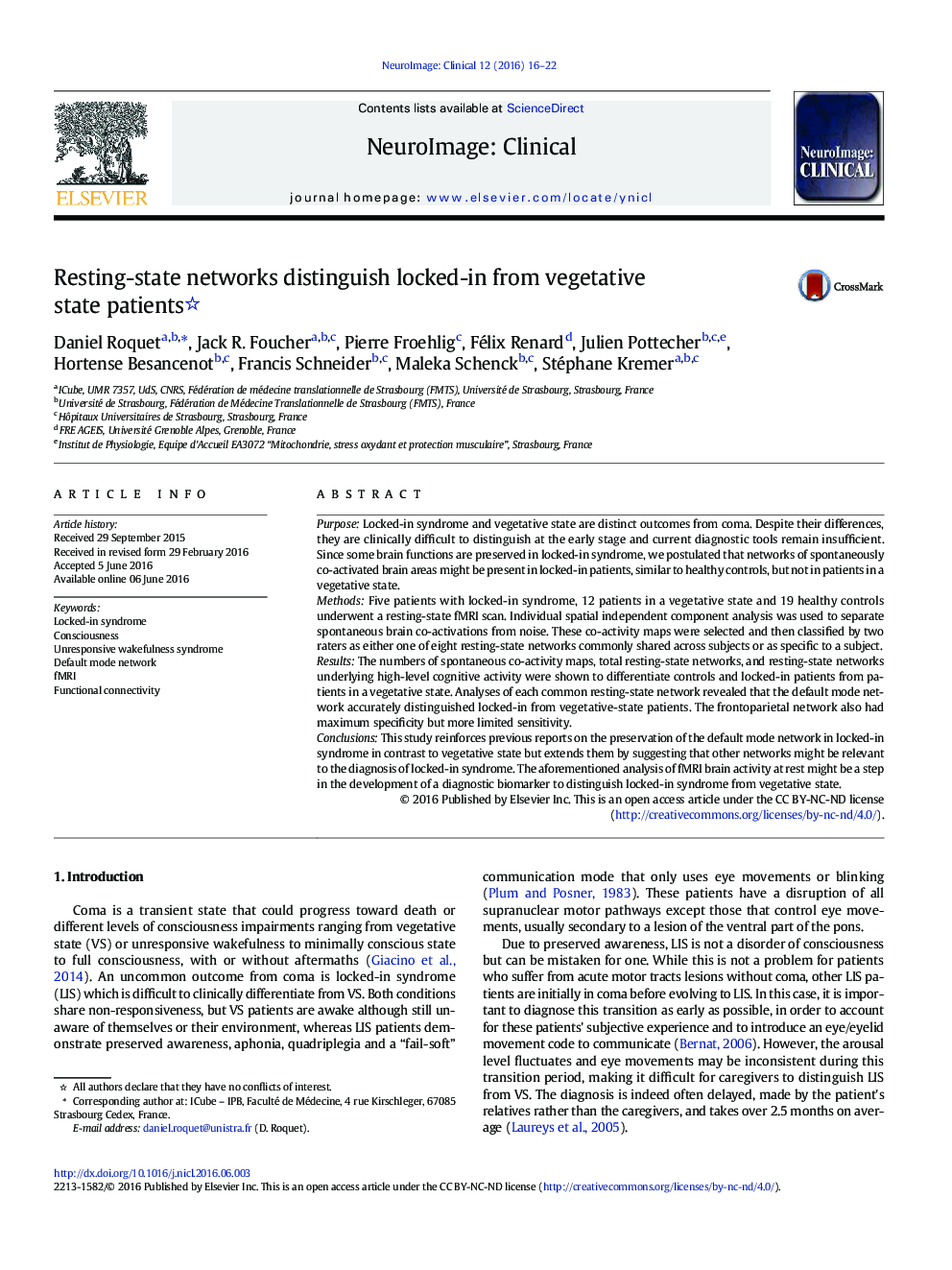| کد مقاله | کد نشریه | سال انتشار | مقاله انگلیسی | نسخه تمام متن |
|---|---|---|---|---|
| 3074785 | 1580955 | 2016 | 7 صفحه PDF | دانلود رایگان |
• Locked-in syndrome could be mistaken for vegetative state.
• We evaluate the use of fMRI resting-state networks as a potential diagnostic tool.
• Resting-state networks segregate locked-in patients from vegetative patients.
• The default mode network reaches high specificity and sensitivity.
• The default mode network seems to be the part of the substratum of consciousness.
PurposeLocked-in syndrome and vegetative state are distinct outcomes from coma. Despite their differences, they are clinically difficult to distinguish at the early stage and current diagnostic tools remain insufficient. Since some brain functions are preserved in locked-in syndrome, we postulated that networks of spontaneously co-activated brain areas might be present in locked-in patients, similar to healthy controls, but not in patients in a vegetative state.MethodsFive patients with locked-in syndrome, 12 patients in a vegetative state and 19 healthy controls underwent a resting-state fMRI scan. Individual spatial independent component analysis was used to separate spontaneous brain co-activations from noise. These co-activity maps were selected and then classified by two raters as either one of eight resting-state networks commonly shared across subjects or as specific to a subject.ResultsThe numbers of spontaneous co-activity maps, total resting-state networks, and resting-state networks underlying high-level cognitive activity were shown to differentiate controls and locked-in patients from patients in a vegetative state. Analyses of each common resting-state network revealed that the default mode network accurately distinguished locked-in from vegetative-state patients. The frontoparietal network also had maximum specificity but more limited sensitivity.ConclusionsThis study reinforces previous reports on the preservation of the default mode network in locked-in syndrome in contrast to vegetative state but extends them by suggesting that other networks might be relevant to the diagnosis of locked-in syndrome. The aforementioned analysis of fMRI brain activity at rest might be a step in the development of a diagnostic biomarker to distinguish locked-in syndrome from vegetative state.
Journal: NeuroImage: Clinical - Volume 12, 2016, Pages 16–22
